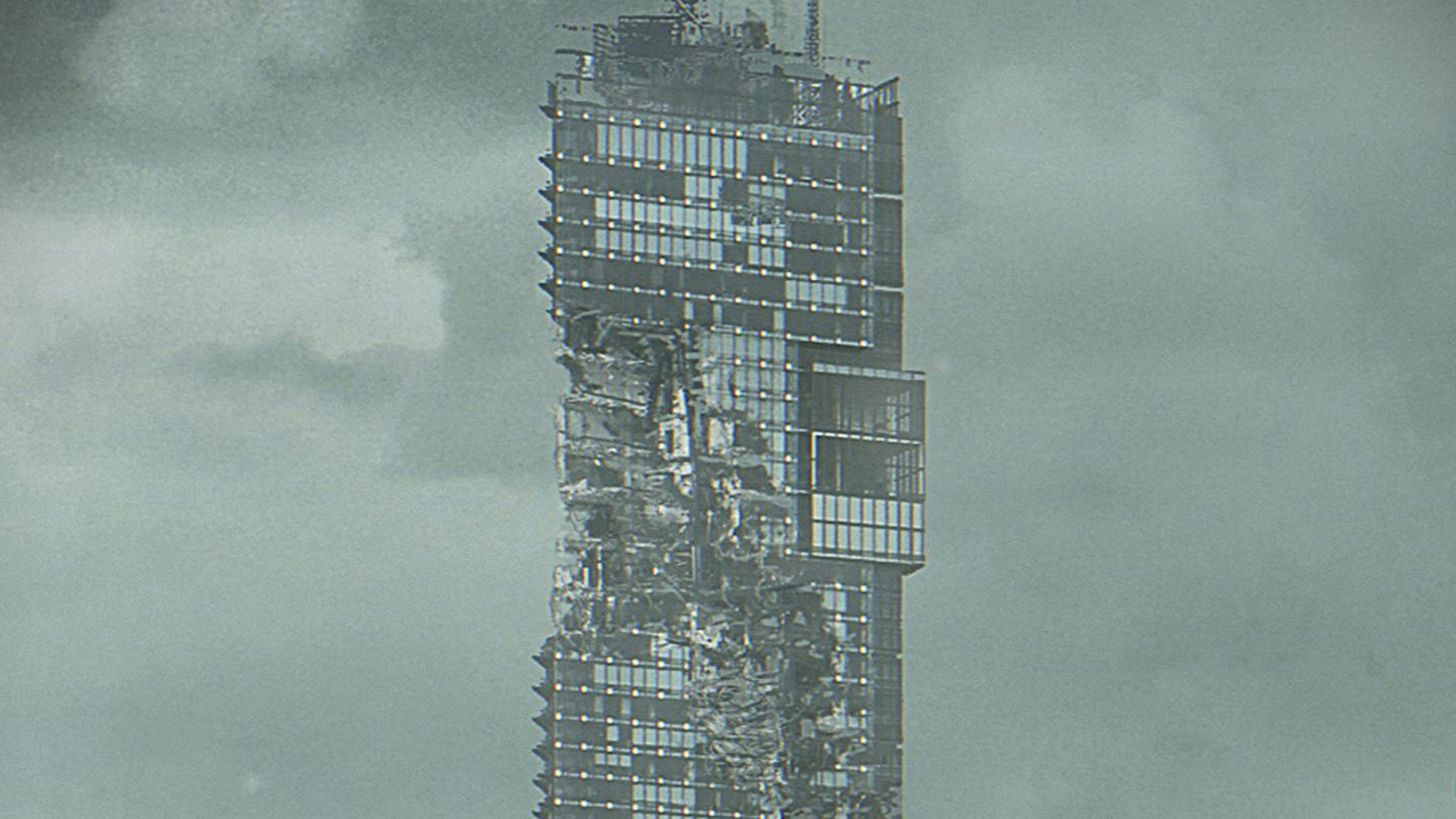by Ken Finton
Helios
January 21st, 2016
JJ Amaworo Wilson’s Damnificados is based on real events, which seems almost incredible until you remember what a truly strange world we live in. These are the facts of the real-life story: In 1990 constuction began on an enormous skyscraper in Caracas, Venezuela, the Centro Financiero Confinanzas (more commonly referred to as the Tower of David). In 1994 Venezuela was hit by a banking crisis and construction on the tower halted, never to be resumed. Beginning in 2007 the half-completed tower, which is the third tallest in the city and the seventh tallest in all of South America, became occupied by homeless squatters, and eventually as many as 2,500 people lived in the building. They rigged up electricity and running water and set up businesses in the building. Contrary to popular perception, the building was far from a war zone. It was a functional city within a city, forgotten people reclaiming a forgotten relic of civilization. In the last year the government has relocated most of these tenants to new housing, and plans are being explored for how best to use the hulking structure. It is unlikely a better use will be found than free housing for a couple thousand homeless people.
Wilson takes this bizarre real-life story and molds it into a compelling fable about the collision between the haves and the have-nots in a fictional South American city. In Damnificados (the Spanish word for victims, most commonly victims of disaster) we follow the efforts of Nacho Morales, the physically disabled leader of a band of homeless outcasts. Nacho is brilliant–he knows a dozen languages and scrapes together a living doing translation work, though he could make far more if he was willing to abandon the ragged families who need him most. He is not willing to do this. He chooses poverty because to do otherwise would be to side with oppression; those with power and money in this city use it only to gain more, regardless of whom they trample in the process.
The book starts with Nacho leading his band of outsiders into the tower. We get our first taste of the book’s use of magical realism when the group discovers the tower’s first floor is currently being occupied by a pack of wolves, and the leader of the pack has two heads. They drug the wolves and relocate them and then begin turning the tower into a home. Nacho starts a school and teaches children and adults to read. Maria, a former beauty queen, starts a salon. A few brothers start a bakery. Nacho uses one of his contacts to get water to the building and has a homeless electrical engineer connect the tower to the city’s electrical grid. Word spreads and more and more homeless families come to the tower. Word also spreads to individuals who don’t like the idea of homeless folks taking over a rich man’s tower for free.
The tower was originally built by a man named Torres (the Spanish word for towers). The land it was built on was once the city’s trash dump, and it was occupied by thousands of poor families who were subsequently displaced when Torres decided to build his tower. He ran out of money and never finished the hulking building, and Nacho feels he is reclaiming land that belongs to the poor by taking over the abandoned structure. The Torres family, disinterested in the tower for decades since construction ceased, feels differently. Violence is threatened and violence is enacted. Prayers are offered and miracles occur. Magical realism plays a significant role in the book, and strange events take place. For the most part these integrate well with the realism of the story, though there are a few times when these feel like deus ex machina that retrieve the novel from a narrative dead end. However, given the parable-like feel of the novel, these never derail our investment in the book.
Wilson’s novel is an invigorating tale about human beings clinging by their fingertips not only to a sustainable way of life, but to their very dignity, and shouting back at the wealthy with what breath they have, proclaiming they will not be ignored or silently pushed aside. The novel is delightfully imaginative and cuttingly insightful. If Gabriel García Márquez wrote a politically-revolutionary novel with dystopian overtones and published it through an indie press, it would be something like this. That is a compliment. Damnificados is engaging, provocative, and wholly original.
David Nilsen is the editor and lead critic for Fourth & Sycamore and works at Greenville Public Library. He is a member of the National Book Critics Circle. You can find more of his writing on his website and follow him on Twitter.







